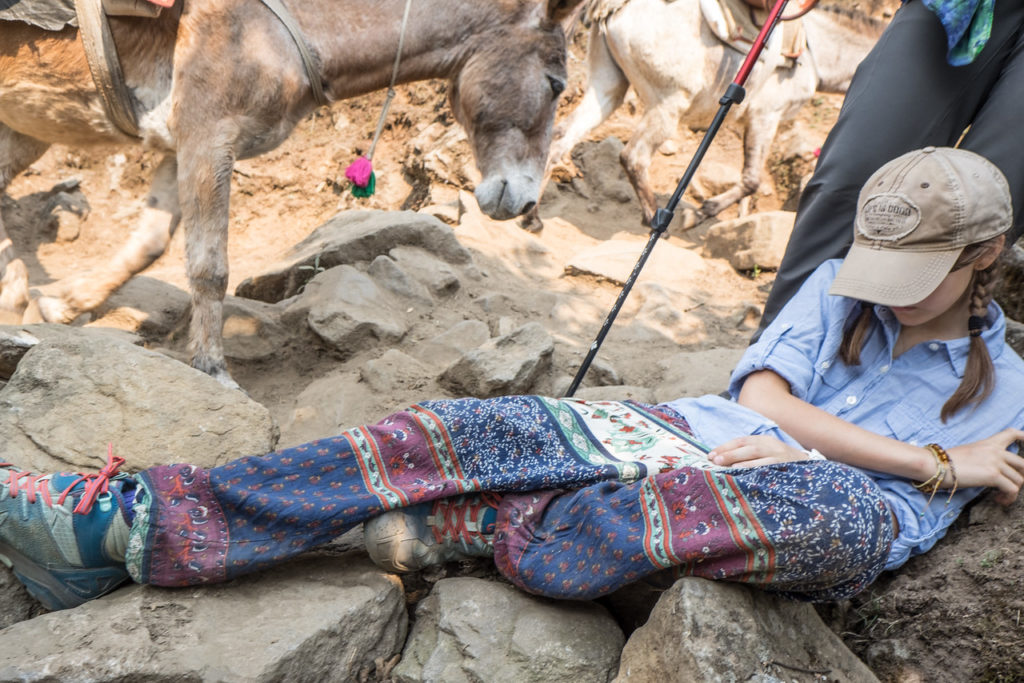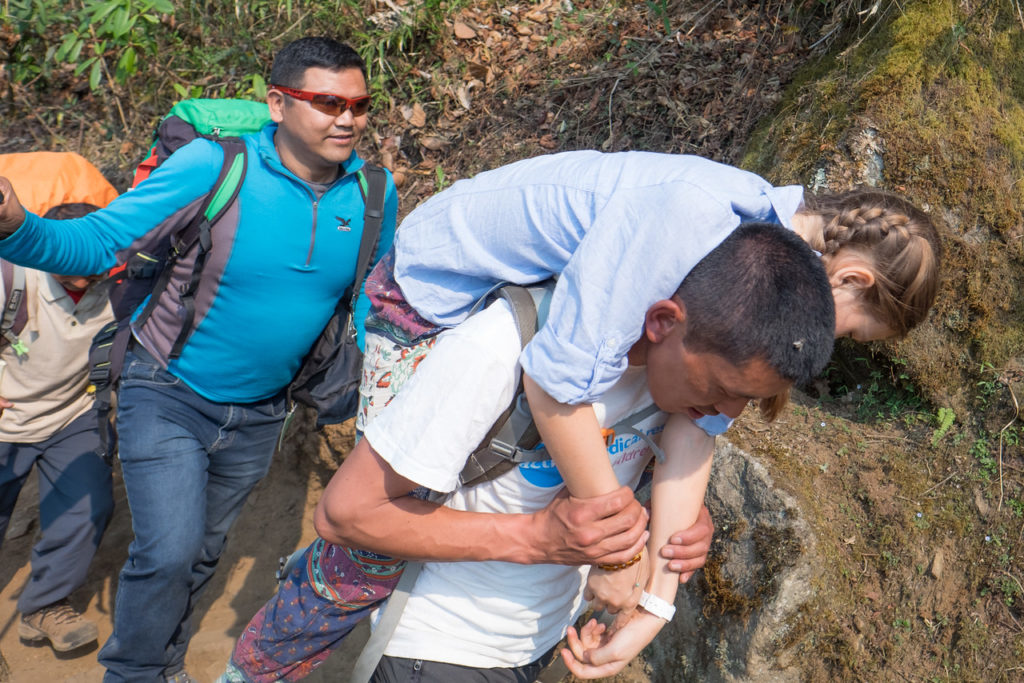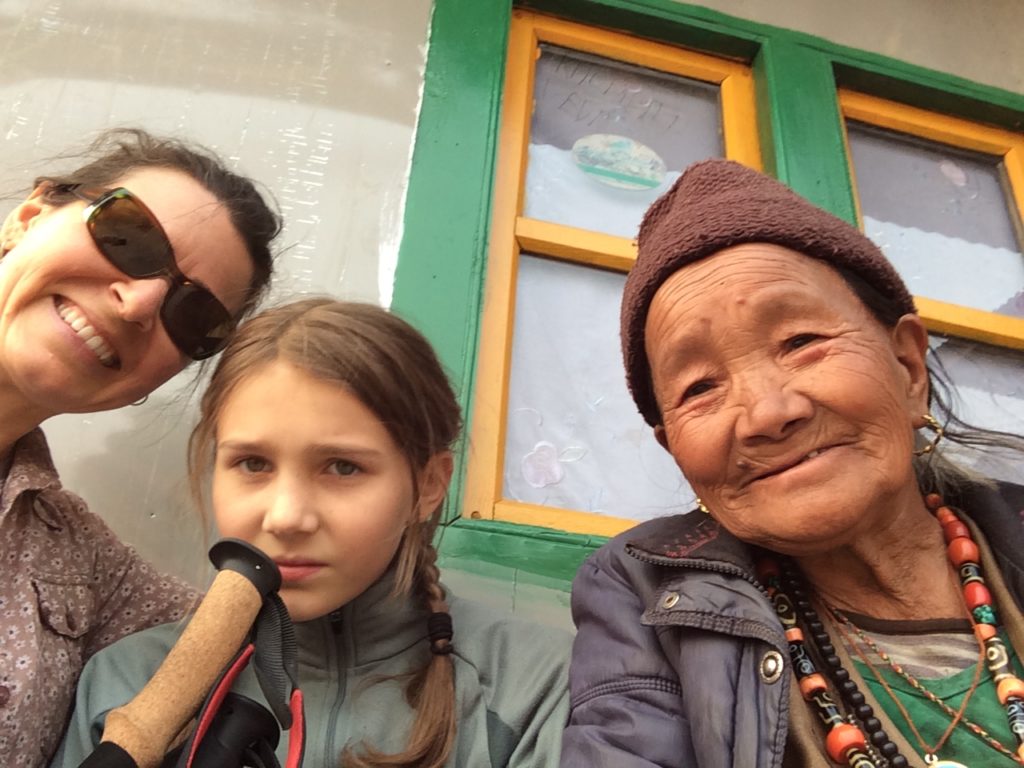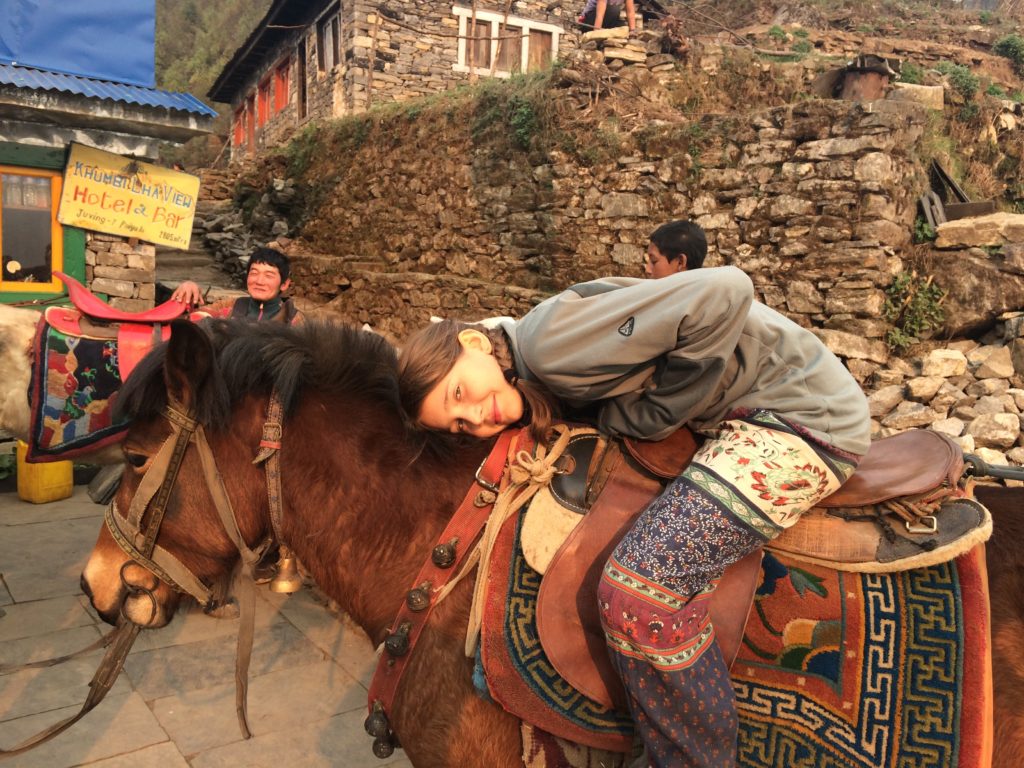Extra adventure in your adventure travel with kids
At least that’s what we all said to each other that time Beija started throwing up four hours into a six day trek in the Himalayas. Adventure travel is good. Too much adventure in your travel can be fun…the next day.
Beija’s classmates and grandparents love this story and as it gets told and retold it isn’t just the stomach pains that people hear. They learn about the kindness and strength of the Sherpa people. They can imagine the amazing terrain we were climbing in the Himalayas. They begin to share the confidence we have that it will all work out. I have a three step plan for dealing with extra adventure in kids adventure travel: get your head right, breathe, and process.
Okay, before I go any further I want to say that the experience that I am using to illustrate how even bad things aren’t that bad is extremely atypical. Please, please don’t use this as a reason to say, “Yep, I knew it, global travel is a scary, terrible, no-good idea.” This could just as easily have happened to us at home. We reduced the risk we were taking by bringing antibiotics with us (Jay had to take them, Beija did not) and buying trip insurance that would have paid for a helicopter evacuation if needed. Ok, back to the post…
Our then-ten-year-old started looking droopy at our lunch stop, began complaining of stomach pain, then we all had the opportunity to revisit her breakfast…over and over. We were pretty sure it was food poisoning. We had been careful about purifying our water and eating fully cooked food but you never know. And after some more experience at altitude we have learned that Beija is prone to altitude sickness and these are classic symptoms for her. It wasn’t actually food poisoning.

Beija curling into a ball on the trail with a team of mules headed for Everest making a pass-by.
Step 1: Get your head right
Welcome all challenges that come your way and stay, as Rick Steves says, “fanatically positive.” This mindset is the core of successful adventure travel with kids. Because someone is always going to puke. If you walk into a trip with the assumption that things will go wrong, then you’ll never be disappointed. I am kind of an anxious person (Jay, no need to nod so vigorously), but the travel-me is open to adversity.
Step 2: Breathe
Panic is for people who stay home. I stay grounded by breathing deeply and focusing in on what is right in front of me. In emergency situations I imagine myself coiling up like a rattlesnake and scanning for information.
So back to the puking… Was Beija uncomfortable? Absolutely. Was she dying? No. She wanted to lie down on the trail and curl into a ball, but there was no real shelter for miles in either direction. I first focused on comforting Beija, “I am so sorry this is happening to your body. I’ve had food poisoning and it is one of the most terrible feelings ever. BUT it goes away pretty fast. The last time I had food poisoning I felt almost back to normal the next day.”
Then I turned to Pema, our guide (it was just me turning to Pema because, joy of joys, Jay was behind a bush dealing with some distress of his own), “What do you think?” Pema engaged some extremely strong Sherpa young men on the trail and secured Beija a ride. We draped her over their backs switching off every twenty minutes or when she tapped their shoulders to be let down to puke again. They were sweet, wonderful, caring men.

Pema (in blue) and our porters with their precious cargo.
Jay trailed behind with his own issues for a couple of hours until we stopped at a tea house to let him catch up. He said he was slow because he was taking pictures, but we know better. A sweet grandmother rubbed Beija’s back while we waited. Jay arrived just in time because he was on his last square of toilet paper. While he was enjoying the traditional squat toilet two young men galloped by on horses. Pema asked if they would help us. They agreed and the invalids rode the last few miles on horseback with the young men walking beside and holding them upright until we got to our tea house for the night.

Everyone is smiling but Beija.

All it takes is a horse to make her feel a bit better.
Here is a video just so you know that Jay and Beija weren’t dying :
Note: Pema is calling Jay “Dai” here, which means older brother in Nepali.
Step 3: Process
As expected, everyone was a little weak but pretty much fine the next day. We have a retrospective thing in our family. I used to be a psychotherapist and Jay manages projects, so we are all about learning lessons so we can improve our next run at something. So that is what we did. At a nice, slow cadence we walked and talked. What was that like? Were you scared? What would some of the other options have been? Beija, if you were the parent what would you have done? How do you think you got sick? Should we make sure to wipe the water bottle rim after purifying? Should everyone carry an extra roll of toilet paper in their day packs? Ad nauseum.
Bonus: Tell your story
Us being us, we had to document. Photos of puke (which we did not include here – you’re welcome). Photos of limp child on Sherpa man’s back. Photos of droopy Waltmunsons on horses. I am sure you can guess Beija’s favorite story to tell when we came home. It was obviously no fun at the time, but discomfort has mileage!
So whether it is puking in the Himalayas, accidentally driving into the center of the Medina in Marrakesh, getting pulled over by Moroccan police (twice), falling into the ocean in Montenegro, or renting a helicopter to make the flight home, something is not going to go as planned. But that is what makes adventure travel with kids the best kind. We’ll save those stories for another day.
Check out our Nepal reading list and the story about the pink guitar that we carried on this trek.
What are your experiences mastering disaster?
Leave a Reply